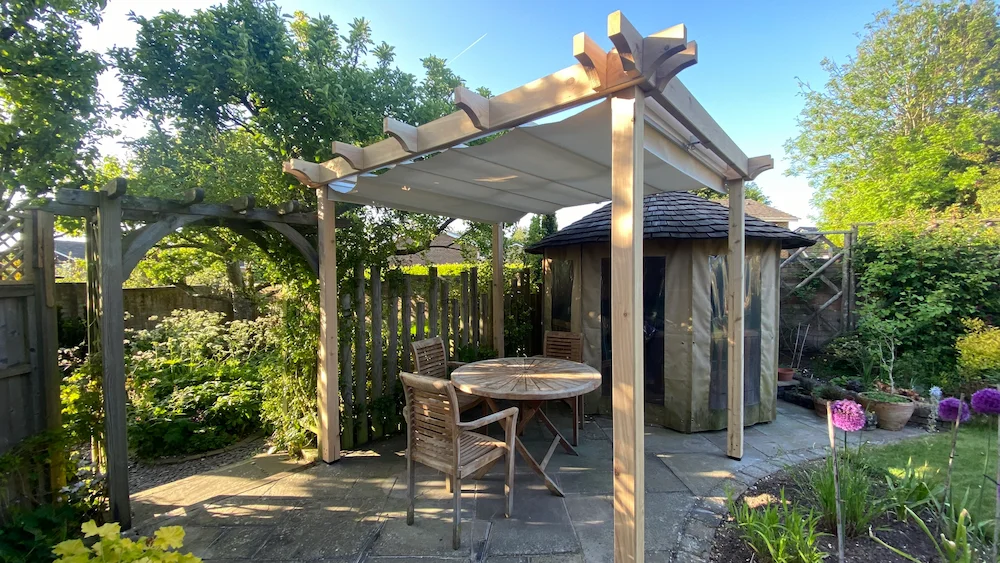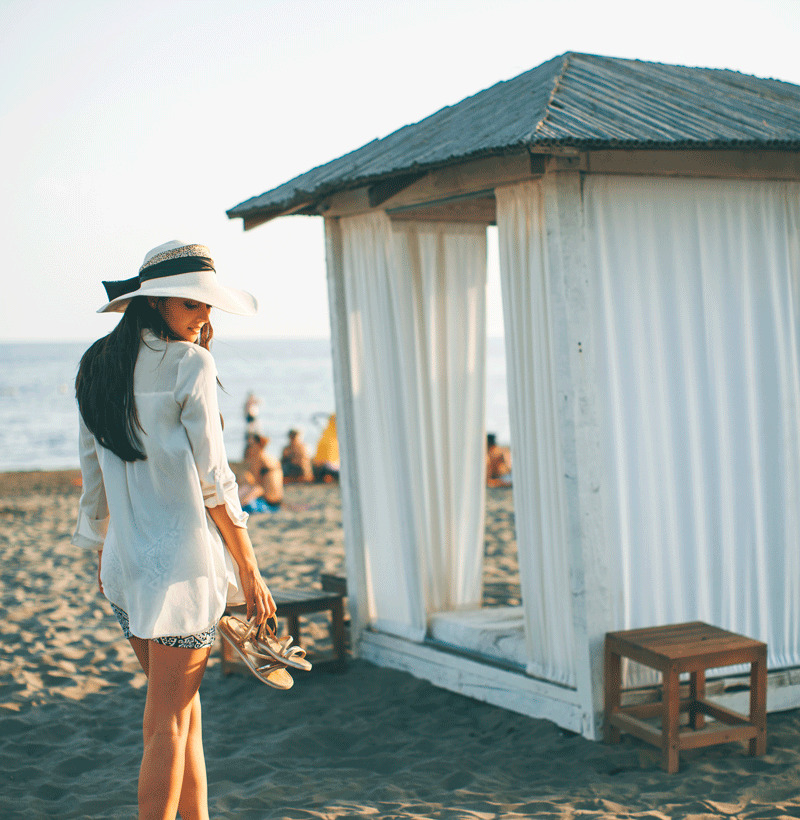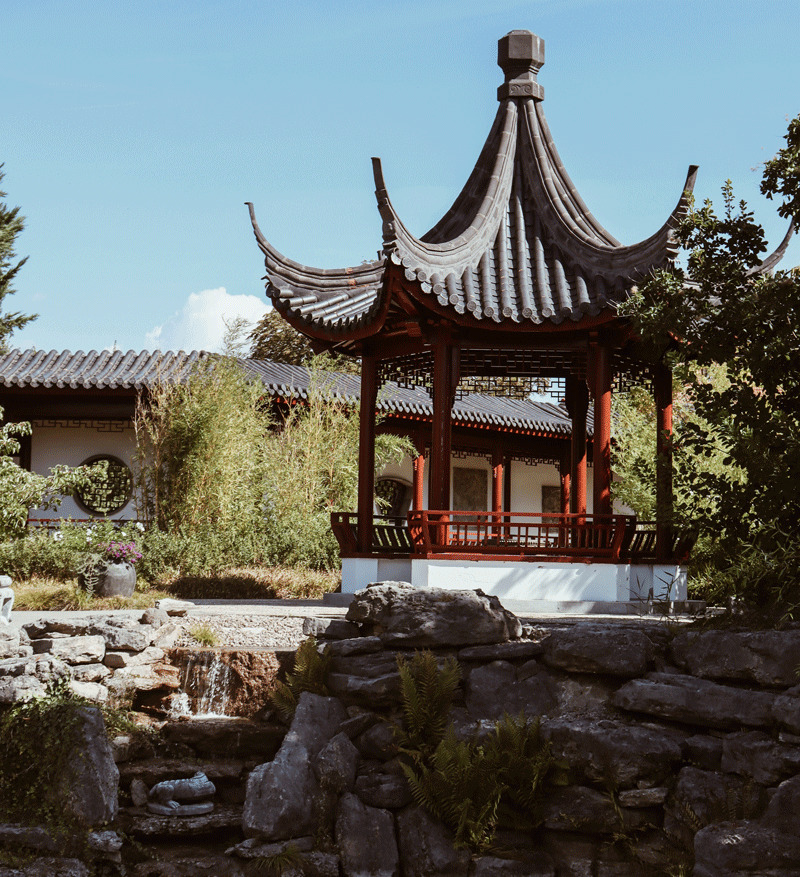This post was originally published in February 2022
If you’re looking for a new way to add shade or shelter to your garden, you might have come across the words pergoda, pergola, and pagoda in your search. If you’re confused, don’t worry!
Pergolas are often used as an addition to existing homes or as standalone structures on their own property, while pagodas are most often found in temples or parks (though some people do have them at home).
Maybe you’re wanting to add ambiance to your outdoor space, or perhaps you need an enclosed area where you can enjoy privacy with family and friends, safe from the British weather. Whatever your reasons for wanting a change, it’s important to know the difference between all these shade-providing structures.

What is a pergola?
A pergola is typically composed of wooden posts connected by spurs and can sometimes have vines trained along them to provide shade and privacy when used as a type of trellis.
Traditionally, pergolas are used as a garden feature to provide shaded walkways or to enhance seating areas. However, as the range of activities we can enjoy in our gardens has changed, uses for pergolas have increased. For example, more people are now using them as shelter for their outdoor kitchen or entertainment area, or as a nice enhancement for their hot tub.
Shade and shelter from the rain can either be created by training flowering vine plants along the structure (which takes time and a green thumb), but many people are now opting for a pergola with retractable canopy or louvred roof, so they can enjoy shelter when required.
Pergolas can be extended from a property as a lean-to pergola or built as a freestanding structure.
A pergoda features a solid roof
A pergoda is very similar to a pergola, but it features a roof, usually made up of solid slats which cannot be moved.
Pergodas have traditionally been used as dedicated sheltered seating areas in outdoor spaces, but you also might find pergodas now at many wedding venues, creating a beautiful focal point for the proceedings. A modern pergoda tends to be made from aluminium, offering something which looks more contemporary and is easy to maintain.


A pagoda has a roof and Asian style
Pagodas are common to South and East Asia; they are seen in Nepal, China, Japan and Korea. They are believed to have originated from ancient Indian Buddhist Stupa, a type of mound shape monument originally built to store reliquaries or to hold sacred relics, and decorated with intricate carvings and sculptures.
Pagodas have become popular in some UK garden designs, mostly thanks to the interest in Japanese and Zen garden design. The beautiful Asian architecture and attention to detail makes for a striking focal point.
Pergola vs pagoda
Pagodas stand out due to their tiered tower design with
multiple eaves. Pagoda roofs are also solid and cannot be controlled like with
some pergolas with retractable roofs or louvred roofs.
All these structures come from different cultures, but generally have the same basic purpose - to provide shade, privacy, and style
Pergolas originated in ancient Greece and were used to create supports for grape vines. Pagodas originated as a way for Buddhist monks to meditate in peace. Even gazebos were originally built by Italian nobility as an extension of their homes, so they could enjoy their gardens without being bothered by insects or weather conditions like rain or wind.
In addition to providing shade, pergolas can also be used as decorative features on your property that add character while serving as a backdrop for flowers or plants.
If you want something more elaborate than just some wood lattice work attached to posts – and don’t mind investing extra money – you might consider a pergola and waterproof shade, or even adding lighting or heating options!
Conclusion
In the end, it really depends on how you use your outdoor space and what sort of aesthetic you want to create. A wooden pergola is a great option to add style and luxury, either in a traditional design to blend in with your cottage garden, or as a modern design can offer a contemporary look. There are also aluminium framed pergolas to choose from. Depending on what you choose, you can also add a pergola shade or Louvred roof.
Our luxury canopy pergolas have come a long way since the time of the Greeks, but are unique today within the UK with customisable modern frames and weatherproof retractable shades that can be used all year round!
Contact Hampshire Shades on 01489 290 025 or ‘Book a Discovery Call’ for a bespoke, luxury, covered pergola with a retractable waterproof roof.

